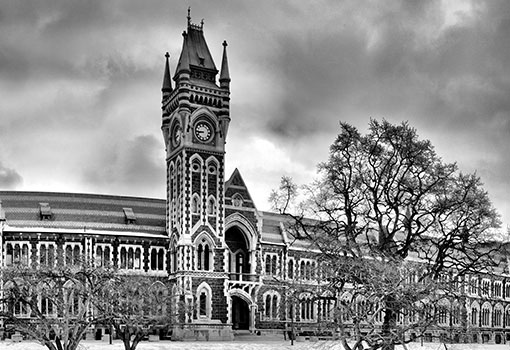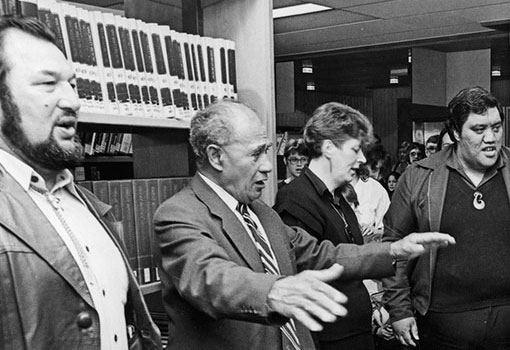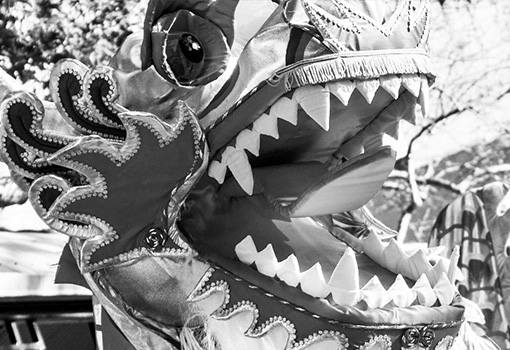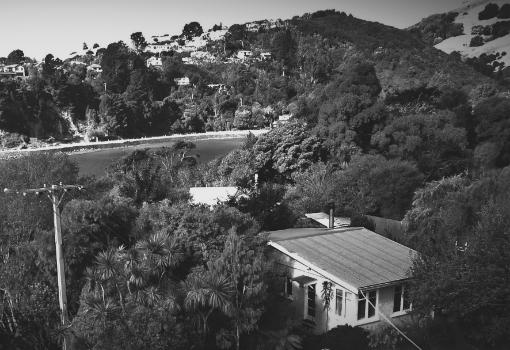
10 Questions with the editors of Katūīvei
Posted: Wednesday Mar 20, 2024
Contemporary Pasifika Poetry from Aotearoa New Zealand
10 Questions with the editors of Katūīvei | Massey University Press (masseypress.ac.nz)
David Eggleton is a poet and writer of Rotuman, Tongan and Pākehā heritage and was the Aotearoa New Zealand Poet Laureate from 2019 to 2021.
Vaughan Rapatahana (Te Ātiawa, Ngāti Te Whiti) is a poet, novelist, writer and anthologist widely published across several genres in te reo Māori and English.
Mere Taito is a poetry, flash fiction and short story writer and scholar of Rotuman heritage who is based in Kirikiriroa Hamilton.
Q1: There is so much writing going on by Pacific writers resident in Aotearoa. Is that why the time felt right for this collection?
DE: Yes. This anthology grew out of discussions, going back several years between Vaughan and myself, and then Mere joined us to bring her perspective, about how there had never been a collection of the poets of Oceanic diaspora, and them alone. Previously, such poets were subsumed into anthologies with less specific themes. The high-profile media coverage of award-winning Pasifika poets, such as Selina Tusitala Marsh, Tusiata Avia and Karlo Mila in the past few years, itself suggested that there must be an energetic community of writers out there from which they had emerged — and of course there was a lot of publishing evidence of this, and more. We felt it was time the contemporary Pasifika efflorescence, the flowering of new generations of poets from one of the fastest growing population groups in Aotearoa New Zealand was acknowledged and recognised. There has been no anthology as wide-reaching as ours for more than a decade, during which time much has changed.
Q2: You have ended up with a selection of 89 poets and 130 poems. You are so familiar with this scene but were you surprised that there was so much work out there?
We wanted as full a picture as we could make it of what is happening at a flax roots level, because it was already obvious to us that a kind of revolution has taken place in the last decade or so: there was a multitude of voices crafting incredible poems, within small activist cultural groups and beyond, that needed to be shared to the wider community. As editors based in different parts of the country, we each brought our individual knowledge of poetry communities to the discussion of the big picture. The sheer proliferation of poems and poets we together came up with was astonishing, although not unexpected. New Zealand-resident Pasifika poets have a lot to say for themselves and are saying it in exciting and challenging ways, like a liberating breeze through an old-hat canon. So much fresh and extraordinary poetry, in fact, that sometimes we found it hard to choose what to leave out. What counted for us was the ability to craft poems of witness to the Pasifika experience in a gripping and memorable voice, and from all angles and points of view. To create balance and perspective, we ultimately had to impose a limit for inclusion of a maximum of three poems from any one poet.
Q3: There are both household and lesser-known names here. How did you go about tracking down writers with, shall we say, quieter profiles?
This anthology springs from work that already existed on the multitude of platforms we have these days, from small press publications and mainstream publications to online forums and performance-focused events. All the material we sought had to have been published or re-published recently, within the last 10 years and preferably within the last 5 or 6 years. What mattered was that all the poets here were already active and, moreover, have recently produced poems in one setting or another. In other words, we were responding to what is readily accessible in the first instance, if you are prepared to seek it out.
So between us we read everything available to the general reader without fear or favour. We then pooled our initial choices for discussion and review. We sought honesty, craft and memorability. Sometimes poems did not measure up because they belonged to specific contexts and did not translate well outside those contexts. Our chosen poems, we feel, all stand on their own as strong — or subtle — poetic creations, while representing Pasifika identity. Our anthology is anti-elitist in that we did not commission anybody, though sometimes we did ask to see poems from poets we knew to be currently writing poems, but who we wanted to see more recent work from.
Q4: What three words do you think best describe what is going on in poetry by Pacific writers in Aotearoa right now?
Authentic voices witnessing.
Q5: Are there discernible themes?
DE: I haven’t looked for themes, I listened out for voices and tones of voice, for musicality, spiralling from a Pasifika heritage. And so we have a range of registers: a very wide, an oceanic, range of diverse registers, that sometimes seem paradoxical. There are hilarious or questioning poems on relationships of all kinds; poems contrarian or intransigent about society’s expectations and the status quo; and poems caustic or sarcastic about power relations. There are poems here that are lyrical and joyous as they celebrate and remember origins and legacies; poems that seek to transcend and absolve trauma; raw poems to shock and unsettle; murmuring poems that explore connections and relatedness. There are poems about the patrilineal, the matriarchal; poems about mixed heritage, about non-binary gender identities, about struggles for indigenous sovereignty. This anthology is a Pasifika poetry festival between book covers.
Q6: Could it be said that Pacific poetry in Aotearoa is like an ocean current taking our literature in a new direction?
Perhaps — time will tell. Certainly it adds to the depth and richness of our literature, of what already exists.
Q7: Is enough being done to support it?
Pasifika poetry is self-evidently vibrant, lively and colourful, and this anthology, partly supported by Creative New Zealand, will enable more people to discover its significant contribution to the culture of Aotearoa New Zealand today.
Q8: Tell us about the beautiful cover image.
The cover is a detail of the painting A gift of thanks (2023), by Dagmar Vaikalafi Dyck, who is of Tongan and German ancestry and lives in Auckland, where she is an arts educator as well as an artist. Dagmar is a leading artistic navigator of the twenty-first-century Pasifika diaspora, and we chose her wraparound image because, through its patterns and colours it offers a holistic symbolic picture, embracing the whole Moananuiākea or Te Moana-Nui-a-Kiwa, the body of water that connects the people of the Pacific. The imagery is partly derived from the textile patterns of Tongan fala, or tapa-cloth matmaking.
Q9: How did the three of you work together to make your selections?
Patiently, industriously, steadily, collegially.
Q10: Invidious question we know, but what, for each of you, is the standout poem and why?
DE: I return to many poems in this collection as inspirational or revelatory, but if I must choose one, let it be the long, self-probing, self-questioning, introspective poem ‘im’ by the late Shaeffer Lemalu, which speaks very much to our immediate, almost apocalyptic, moment with its Pasifika-centred global anxieties and uncertainties that we are all caught up in.
MT: Pelenakeke Brown’s ‘Crossing’ is a standout for me. Her keyboard practice is fabulous — the interplay between, graphics, text, space responds to the thematic concerns of Pacific Island history and migration within the region and gives us a glimpse of her experimentative practice. I love it when poets write in ‘not-your-usual’ ways and push the boundaries of writing. I am excited by her work and cannot wait to read more from her. Also, Robert Hack’s prose/flash poem ‘Cannons Creek Four Square’ was like reading a ‘possible flashback’. My father especially, would have marched back to the store, and possibly with a rolling pin too.
VT: The first poem by Maria Alefosio, ‘Raiding the Dawn’. This poem ‘sets the standard’ so to speak, a standard not relinquished for the next 300-plus pages.



